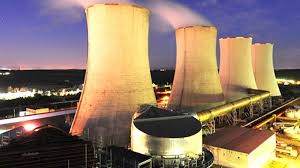Hwange Thermal expansion project 62 pc complete
The Hwange Thermal Power Station expansion project closed the first quarter at 62,54 percent from 58,29 completion at the beginning of the year after being negatively affected by interim payment certificate delays and the Covid-19 pandemic.
The expansion programme entails the addition of Units 7 and 8 with each unit expected to generate 300MW.
In a latest update for the first quarter, the Zimbabwe Power Company (ZPC) said the period under review was a challenging one as generation at Hwange, which is the country’s largest thermal power station, was depressed.
“Taking a closer look at the projects being undertaken by Zimbabwe Power Company, Hwange 7 and 8 Power Station Expansion Project, which is expected to add 600MW to the national grid, registered progress of 58,29 percent at the beginning of the quarter and closed at 62,54 percent against a planned progress of 85,9 percent.
“The project was affected by Interim Payment Certificate (IPC) outstanding payments as well as effects of Covid-19. Significant milestones in the quarter included arrival and hoisting of Unit 7 and 8 generator transformers, tower erection as well as steam turbine installation,” it said.
ZPC and Exim Bank of India have signed a contract for the upgrade of the Deka pumping station and construction of a 42-kilometre pipeline on the 21st of January this year, with an Indian consortium having won the tender.
The power company said the project’s kick off meeting was held in February ahead of the commencement of the programme during the quarter upon fulfilment of conditions precedent.
“The deal will solve the perennial water supply problem at Hwange Power Station, the country’s largest coal-fired power plant, which currently requires about 3 500m³ of raw water per hour for power generation.
“This may increase to about 6 000m³/hr when the two expansion units are in operation.”
During the period under review, ZPC produced 745,70 Gigawatt hours against a target of 1813,02GWh, representing a negative variance of 3,71 percent. The output was, however, 34,92 percent above the output for the same period in 2020.
“Hwange Power Station operated with an average of two units during the quarter against a target of five units and sent out 411,42GWh of energy missing its quarterly target by 55,78 percent,” said ZPC.
“Unit 3 continued to be unavailable throughout the period under review as it was on an extended major overhaul.
“Reliability of units 1, 4 and 5 was also affected owing to overdue planned outages and the fire incident, which occurred on February 10, 2021 and caused extensive damage to units 1 and 2. The situation was worsened by the unavailability of Unit 6 towards the end of January due to leaking hydrogen coolers,” said ZPC.
On Kariba Hydropower Station, the power utility said generation had to be ramped up to compensate for the low generation levels at the thermal plants.
The Zambezi River Authority allocated 30 billion m3 of water to ZESCO’s (Zambia Electricity Supply Corporation) Kariba North Power Station and ZESA’s Kariba South Power Plant for generation in 2021.
“This translates to Kariba South Power Station having an annual water allocation of 15Bm3, which corresponds to an annual average capacity of 381MW. Kariba lake levels rose from 478,38 metres at the beginning of the quarter to 481,84 at the end of March 2021, representing a 3,46m increase in lake level over the quarter.
“The lake level at the end of the same quarter last year was 477,83m thus a 4,01m favourable difference.”
ZPC said this implies improved water situation in 2021 hence an anticipated water allocation increase.
As at the end of the quarter under review, the station had utilised 5,43Bm3 of water and generated at an average of 594MW.
Thus, the station remains with 9,57Bm3 for generation for the remainder of the year.
The small thermal power plants sent out a combined 50,69GWh of energy thereby missing the quarterly target which was set at 76,98GWh by 34,15 percent.
“This was a great improvement from Q1 2020 where the stations sent out a total of 11,67GWh. Generation was constrained mainly due to coal stock outs at Munyati and low boiler plant availability at Bulawayo Power Station,” said the power company.-herald.cl.zw











